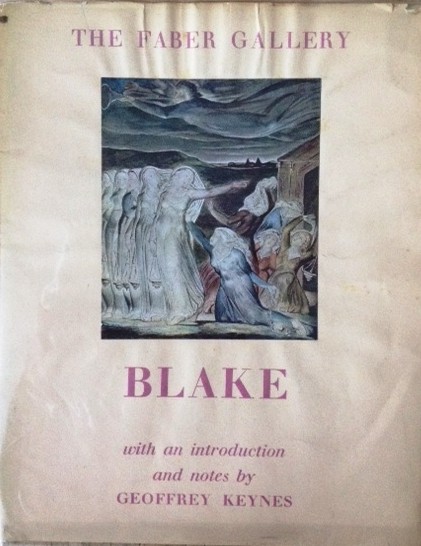Inspiring Older Readers
 posted on 13 Feb 2022
posted on 13 Feb 2022
The Faber Gallery
I recently came across a rather distressed copy of a large format (10” x 12”) card-covered introduction to the work of William Blake with critical notes by Geoffrey Keynes. It contains ten colour plates that have been tipped-in and Keynes’ analysis of each image occupies about half of the adjacent page. It was published as part of a series that is called The Faber Gallery and a dozen others in the sequence are listed on the back cover – including the likes of Manet, Degas and Botticelli and they all have established artists or art critics commenting on them.
I’ve not really been conscious of this series before but they are exactly the kind of thing that I would have gobbled down when I was in my twenties and greedy to have relatively cheap access to art and art history. So my curiosity was piqued and I decided I’d do some digging to see what I could find out about what led Faber & Faber to produce this series.
The first book in the series was published in 1944 when Faber, like all publishers, was struggling with paper supplies and, contrary to what that seems to suggest, it was a situation that had unexpected upsides. The Faber & Faber website puts it this way:
“There were simple problems unknown before, like the search for sufficient paper to maintain its output. Yet there was also an increased appetite for books, as a result of which the company was able to sell out almost every title published, achieving financial stability for the first time. In 1940 the company was publishing some 180 titles, three times as many as a decade earlier.”
The Faber Gallery gambled on there being an expanded public demand for artistic and cultural projects in the post-war years and over the course of ten years following World War Two the series produced around 60 new titles.
Again, the Faber website is informative:
“Kurt Maschler had bought a large stock of four-colour half tone blocks used by the art magazine Apollo in the 1930s. These were put to profitable new use. A notable critic would introduce a famous artist or school of artists, providing brief, elegant commentaries on a selection of about a dozen paintings, handsomely reproduced. Each volume cost only 7s 6d.
Amongst early works in the series was Sir Kenneth Clark on Florentine Paintings, Geoffrey Keynes on Blake, Stephen Spender on Botticelli. They sold in large numbers.”
Of course, Faber wasn’t the only publishing house trying to cash in on bringing comparatively cheap art books to a wider middle-class readership who could afford the relatively modest prices they were charging. Penguin Books, for example, went in a very different direction with their Penguin Modern Painters series – not only was the artistic focus different but the physical product was a clear alternative ( see in the gallery pictures below for an example). These were in an approximately 6”x 4” letterbox format that contrasted markedly with Faber’s much larger 12” x 10”. While the bigger pages obviously gave more breathing space for the art reproductions, it brings with it obvious problems of storage – both in retail and in domestic settings.
Penguin were intent on bringing a new generation of artists to public prominence and included those who were less well known – Edward Burra, for example - as well as those, like Henry Moore, who were much more firmly established in the public consciousness. The Faber Gallery by contrast was there to present the work of established masters and anticipated readers who were focussed much more on art history.
So while the two series might, at first sight, appear to be in competition they do in fact serve very different audiences and there was, for a while at least, plenty of space in the market for both. This was an attempt to bring art to the wider audience - not quite to the masses - and as such they represent social history as much as art or book history.
You can find examples of both these series at modest prices in second hand bookshops if you’re moved to explore them for yourselves.
Terry Potter
February 2022

